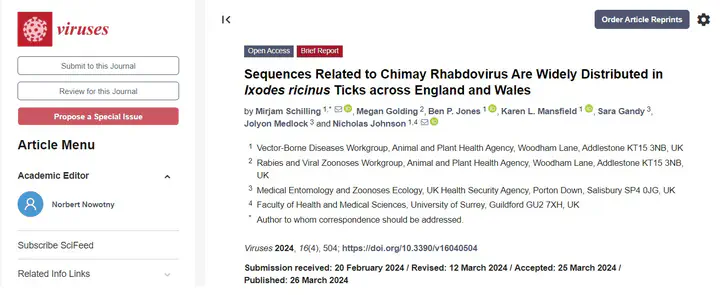Sequences Related to Chimay Rhabdovirus Are Widely Distributed in Ixodes ricinus Ticks across England and Wales

Abstract
Ticks are the main arthropod vector of pathogens to humans and livestock in the British Isles. Despite their role as a vector of disease, many aspects of tick biology, ecology, and microbial association are poorly understood. To address this, we investigated the composition of the microbiome of adult and nymphal Ixodes ricinus ticks. The ticks were collected on a dairy farm in Southwest England and RNA extracted for whole genome sequencing. Sequences were detected from a range of microorganisms, particularly tick-associated viruses, bacteria, and nematodes. A majority of the viruses were attributed to phlebo-like and nairo-like virus groups, demonstrating a high degree of homology with the sequences present in I. ricinus from mainland Europe. A virus sharing a high sequence identity with Chimay rhabdovirus, previously identified in ticks from Belgium, was detected. Further investigations of I. ricinus ticks collected from additional sites in England and Wales also identified Chimay rhabdovirus viral RNA with varying prevalence in all tick populations. This suggests that Chimay rhabdovirus has a wide distribution and highlights the need for an extended exploration of the tick microbiome in the United Kingdom (UK).